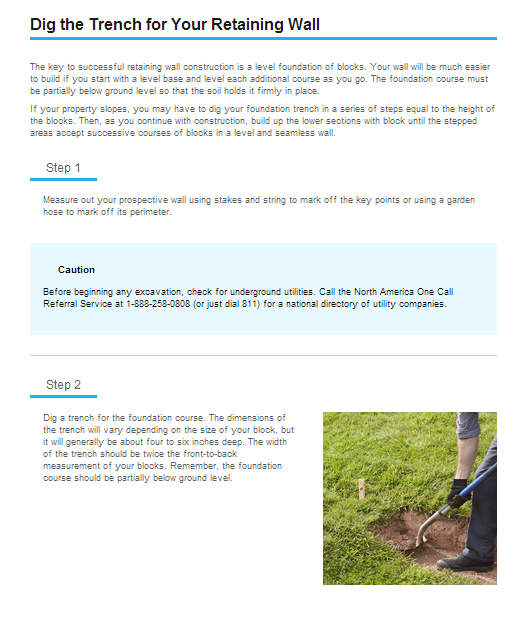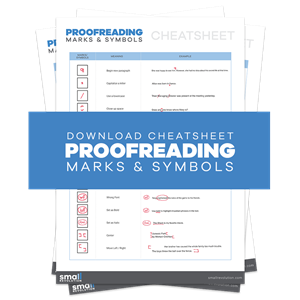The aim of this guide is to help your writers create a How-to blog posts in a high quality and effective manner so that readers can easily understand and follow the how-to steps.
A how-to blog post is one of the best ways to show your market the value of your product. Its aim is to explain to readers how products are assembled or even creative ways to use them through a series of steps.
Most importantly, your aim should be to promote your products and provide links to product pages or categories through the blogs that you are writing.
You can always write any article that you can think of, but the question is, is this topic related to my business? Would this promote my products? These should be kept in mind while writing how-to blog posts.
The key to an effective how-to blog post is coherence. Each step, and the other of all the steps, must be arranged logically and in a way that will make it easiest for the reader.
The how-to blog post will be made up of headers, steps, and detailed instructions. Headers are used to section a group of steps with one aim (e.g. preparation, execution, etc.)
Each step will be numbered and will be followed by more detailed instructions with examples.
By following these steps, your readers and clients will be able to thoroughly and easily learn more about your products.
Step 1: Identify Your Readers

Who are you writing for? What kind of customers will be reading your how-to blog post?
Write them down once you have identified them and keep them in mind as you write your list.
Step 2: Identify Your Objective
What is the aim of your how-to blog post? What do you want your audience to learn?
This will serve as a guide or general outline so you won’t be tempted to go into topics that do not necessarily need to be elaborated on. Write down your objective and come back to it if you are not sure of what to include and what not to include.
Step 3: Create A Working Title
A working title is the initial title of your article as you are writing it. It doesn’t have to be perfect and may change as you go on writing but it will also serve as a guide to keep you on-topic.
Once you have finished your list, come back to your working title and check if it accurately describes your list. If not, rewrite it.
It may also be helpful to write down several working titles so that you are not limited to just one.
Step 4: Create A Template
Your template or outline will serve as a guiding format for your how-to blog post. It consists of the following:
- Introduction – Describes what the how-to guide is and what readers can learn from it
- Body – Enumerates each item in your list, provides descriptions and examples
- Conclusion – Ends the list with a reflection of what readers have learned
When creating an outline, refer to Step 2; what is your how-to guide about and what do you want your readers to learn?
Step 5: Write The Introduction
The introduction is where you will give an interesting short summary of what you will be teaching your readers and how it will be useful to them.
Furthermore, it is your chance to show your audience that you are a credible source for learning a how-to guide.
You may also opt to write the introduction after you have finished writing all the how-to steps. Then you will know what the actual content is and it will be easier to introduce it.
Build A Block Retaining Wall by Lowes.com is a good example of a how-to guide. Refer to the article as an example and follow these steps when writing your introduction
1. Write an opening line that catches the attention of your readers by stating how the guide can be beneficial to them.
- “A block retaining wall might be just what your landscape needs if you want to level a steep slope or enclose an area for a decorative garden. With a little effort, you’ll have a beautifully landscaped area that’s easy to maintain.”
Letting readers know the value of your guide encourages them to keep reading.
2. Explain how your readers can easily go through your step-by-step guide.
- “Interlocking concrete retaining blocks require no mortar. Aside from the weight, they’re almost as easy to assemble as children’s interlocking blocks. If you make mistakes or change your mind about the location or shape of your wall as you’re building, just dismantle it and start over. . .”
As a continuation of how the guide can be beneficial to readers, let them know that whatever you are teaching is doable by going into more detail about how it will be done.
This part of the introduction is also an opportunity to show readers that you are a reliable source for this information by discussing details further.
3. Transition into the body.
- “Tips for Your Retaining Wall Project…”
There are different ways to transition into the body. In this article, the introduction ends with a few tips for the readers before executing the first step.
As with each step in this guide, think about what will be more comprehensive for your readers. Is it better to know these tips before starting with Step 1 or will it be easier to understand if the tips are incorporated in the steps?
Step 6: Write The Body
The body contains all the necessary steps in your how-to blog post. This is what readers actually want to know and learn from. Make sure it is consistent with what is said in the introduction.
These steps will be made up of a combination of items in bullets, numbers, headers, or paragraphs. Format it in such a ways that will be the easiest to understand.
Refer to the same example: Build a Block Retaining Wall.

Notice how each step (Dig the Drench for your Retaining Wall) has a description and sub-steps. Formatting the body in this way makes it easier for readers to understand.
1. Give each step a header describing what it is about.
- Make them as short as possible. You will be elaborating more about it in the description and sub-texts.
- Each step must be in bold/numbered to make it more visible to your readers.
2. Provide descriptions for each step.
- “The key to successful retaining wall construction is a level foundation of blocks. Your wall will be much easier to build if you start with a level base and level each additional course as you go. The foundation course must be partially below ground level so that the soil holds it firmly in place.
Notice how this paragraph explains why this step is important and how crucial it is to execute it properly.
3. Discuss each step further through sub-steps.
- “Step 1: Measure out your prospective wall using stakes and string to mark off the key points or using a garden hose to mark off its perimeter…”
- In the example, there are three sub-steps. They are specific procedures to follow. Instead of just saying “Dig a Drench for your Retaining Wall”, which may be a little vague and difficult for readers to execute, sub-steps give more detail by explaining exactly what to do.
4. Provide examples or pictures.
- Even after explaining the steps thoroughly, it is always better to provides pictures. They will serve as a reference for readers to know if they are doing the right thing.
- Pictures not only make steps easier to understand, but it also makes the how-to guide look more doable and less intimidating.
5. Make sure that the steps are arranged chronologically.
- Start with the most basic step. For example, before anything, the first step is to gather the necessary material (in the example, the necessary materials were included as part of the introduction with its own header and links to where they can be purchased).
- Additionally, in the article How To String A Guitar, the first step does not jump directly to installing the strings but rather choosing the strings.
- Transition from one step to another by using words like “then” and “next”.
- In your last step, let your readers know they are almost finished with the guide. Transition into the conclusion by using words like “lastly” or “finally”.
Step 7: Write The Conclusion
There are several ways you can conclude your list-based blog post.
- Give your readers a recap of what they have learned by referring to your notes from Step 2. Only do this if you have not discussed it in the introduction.
- Keep it short by asking them a question.
- Pick a call-to-action.
You may also include all three of these in your conclusion. The most important thing is to leave an impression and remind the readers that they have gained new knowledge through your list.
Because the last step in the example has made it obvious to readers that the article is about to end, the writer opted not to write a conclusion.
However, asking them a question or picking a call-to-action engages your readers as well as wraps up the article effectively, not leaving it hanging.
Ask your readers for a review of your how-to guide or to check out your Facebook page.
Step 8: Edit And Finalize Your How-To Blog Post

Read and reread your entire how-to blog post for products. Correct any errors you may have made and improve anything that needs improvement.
1. Ask someone to read your how-to post.
- An outsider’s opinion can give you a fresh perspective of your article and will help you find more ways to improve it. Ask them if your how-to guide is clear and concise.
2. Finalize your title.
- Does your working title still accurately define your how-to blog post? If not, change it. Make it as accurate as possible.
3. Choose an image.
- This will serve as a thumbnail and click-through for your article and will appear on your blog and when it is shared on social media. Make sure it is eye-catching but also represents your how-to blog post well.
After completing this step, you’re ready for publishing!
Additional Guidelines
Here are a few more things to remember when writing your how-to blog post:
- Formatting is very important. Make the how-to guide as easy for your readers as possible. In order to do this, the format must be uniform throughout the entire guide and must contain headers and numbers, such as in the example provided.
How to Change Ukulele Strings illustrates how poor formatting can affect the coherence and effectiveness of a how-to guide. Notice how even though it is well-written, descriptive, and even provides photos as examples, the formatting makes it very difficult to follow.
- Don’t use terms that are too technical. Avoid jargon, acronyms, or specialty words that your readers might not be familiar with. If you have to use these words, make sure you explain what they are.
- Don’t leave any room for readers to think twice. Make sure each sentence is as clear and coherent as possible and cover all necessary topics. Anticipate the questions readers might have and address them.
- Use examples. Instructions that come with pictures to illustrate each step make it easier for your readers. Always use high quality photos.
Final Checklist
In order to create an effective How-to blogs, you need to:
- Identify your readers first and keep them in mind as you write your list.
- Identify the objective of your how-to blog as this will serve as your guide to keep you on track.
- Create a working title that accurately describes your list.
- Create a template that serves as your guiding format.
- Write an interesting introduction.
- Write the body with all the necessary steps and discussions.
- Write a conclusion that leaves an impression and reminds the readers of the knowledge that they have gained through your list.
- And lastly, edit and finalize your how-to blog post by rereading and correcting errors.


